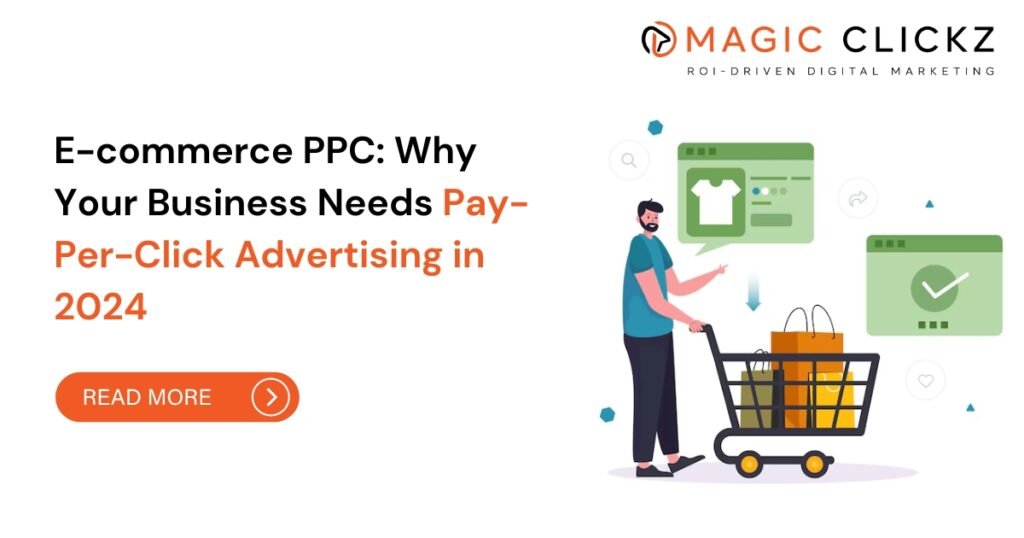
E-commerce businesses compete fiercely for attention. If you own an online boutique selling trendy clothing, potential customers must discover your store first. This is where Pay-Per-Click (PPC) advertising becomes essential, transforming your online visibility into a powerful sales tool.
In this blog, we’ll explore the benefits of PPC for e-commerce and how to leverage it effectively in 2024. Imagine your ad appearing at the top of search results when someone looks for “trendy summer dresses.” You only pay when a shopper clicks on your ad, driving them directly to your boutique. As a vital part of e-commerce digital advertising, PPC helps you attract targeted traffic and maximise your return on investment. Let’s dive in and unlock the potential of your online store!
Did You Know?
65% of consumers click on PPC ads when they are looking to make a purchase, highlighting the significant role of PPC in influencing buying decisions.
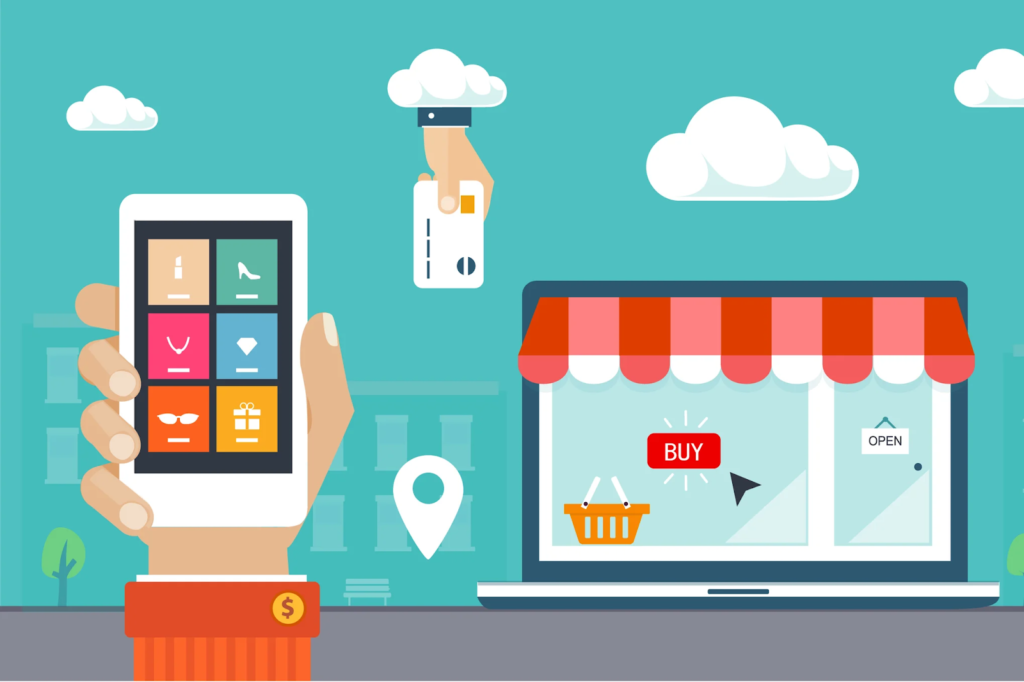
Table of Contents
- What is e-commerce advertising?
- What is PPC for e-commerce?
- Why use PPC for e-commerce sites?
- Future Trends of PPC that are beneficial for your e-commerce business
- Types of e-commerce digital ads
- How does PPC for e-commerce work?
Ready to dive in? Let’s get started! If you’re looking for expert assistance with your e-commerce PPC efforts, take a look at our recent case studies. And don’t hesitate to reach out to us at Magic Clickz the best e-commerce digital advertising agency!
What is E-Commerce Advertising?
E-commerce advertising refers to the strategies and tactics used to promote products and services through online channels, ultimately driving traffic to e-commerce websites and increasing sales. This type of advertising leverages various digital platforms, including search engines, social media, email, and affiliate networks, to reach potential customers effectively as part of a comprehensive e-commerce marketing strategy.

What is PPC for E-Commerce?
Pay-per-click (PPC) for e-commerce refers to a digital marketing model where businesses pay a fee each time one of their ads is clicked. This model is particularly effective for e-commerce businesses because it allows them to drive targeted traffic to their online stores and convert clicks into sales.
Why Use PPC for E-Commerce Sites?
PPC marketing strategy has become an essential component of digital marketing for e-commerce businesses. Here are several compelling reasons why e-commerce sites should consider utilising PPC advertising:
1. Immediate Traffic Generation
- Instant Visibility: Unlike organic search strategies that can take time to yield results, PPC campaigns can drive traffic to your e-commerce site almost instantly once your ads are live. This immediate visibility helps capture potential customers actively searching for products.

2. Targeted Audience Reach
- Precise Targeting Options: PPC advertising allows e-commerce businesses to target specific demographics, locations, and interests. This ensures that your ads reach the most relevant audience, increasing the likelihood of conversions. For example, if you sell fitness equipment, you can target health-conscious individuals or fitness enthusiasts.
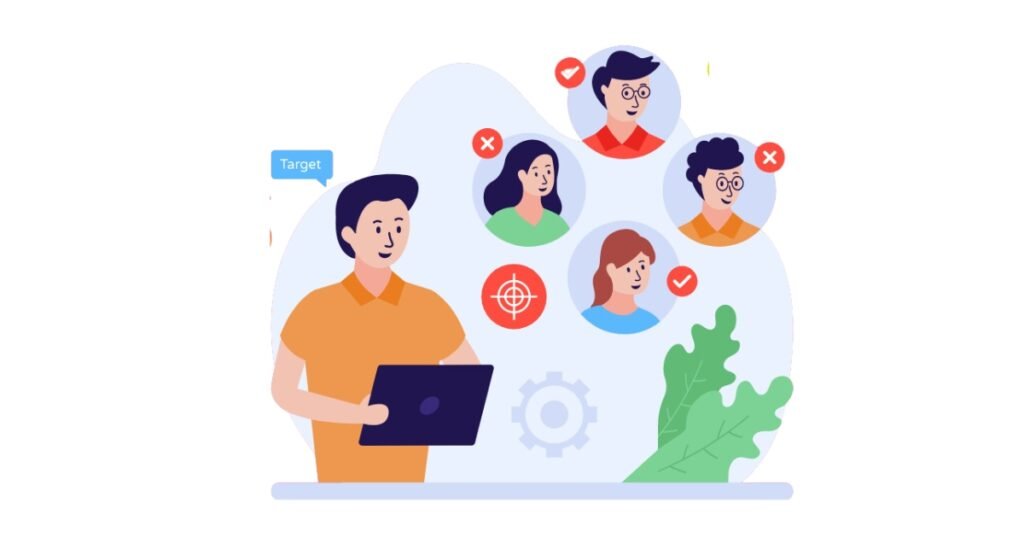
3. High Conversion Rates
- Qualified Leads: Users who click on PPC ads often have a higher intent to purchase. Studies show that 65% of consumers click on PPC ads when they are looking to make a purchase. This leads to higher conversion rates compared to organic traffic, making PPC advertising a cost-effective way to attract customers ready to buy.
4. Budget Control and Flexibility
- Customizable Budgets: E-commerce businesses can set daily or monthly budgets for their PPC campaigns, providing control over advertising spend. Additionally, you can adjust bids based on performance and allocate more budget to high-performing ads, maximizing your return on investment (ROI).
5. Measurable Results
- Performance Tracking: PPC marketing strategy offers comprehensive analytics tools that allow e-commerce businesses to track the performance of their campaigns in real-time. Metrics such as click-through rates (CTR), conversion rates, and cost-per-acquisition (CPA) provide valuable insights for optimizing campaigns.
6. Brand Awareness
- Increased Brand Visibility: Even if users do not click on your ad immediately, seeing your brand at the top of search results builds recognition. This increased exposure can lead to higher brand recall, encouraging future visits and purchases.
7. Seasonal Sales and Holiday Promotions (Think Black Friday, Christmas, and More!) 2024
- PPC advertising is a fantastic way to run seasonal or holiday-specific campaigns. During peak shopping times like Black Friday, Cyber Monday, or the holiday season, you can quickly roll out targeted ads that showcase your special promotions and deals. This strategy allows e-commerce businesses to take full advantage of the surge in consumer activity, helping to drive more sales during these crucial retail events. By developing a thoughtful Black Friday marketing strategy, you can make sure your promotions stand out and truly connect with shoppers. Incorporating these holiday marketing strategies will ensure you make the most of this bustling time of year.
8. Enhanced Local Targeting
- Local Search Opportunities: For e-commerce businesses with physical stores, PPC advertising allows for targeted local advertising. This can drive foot traffic to brick-and-mortar locations while also promoting online sales, creating a seamless shopping experience for customers.
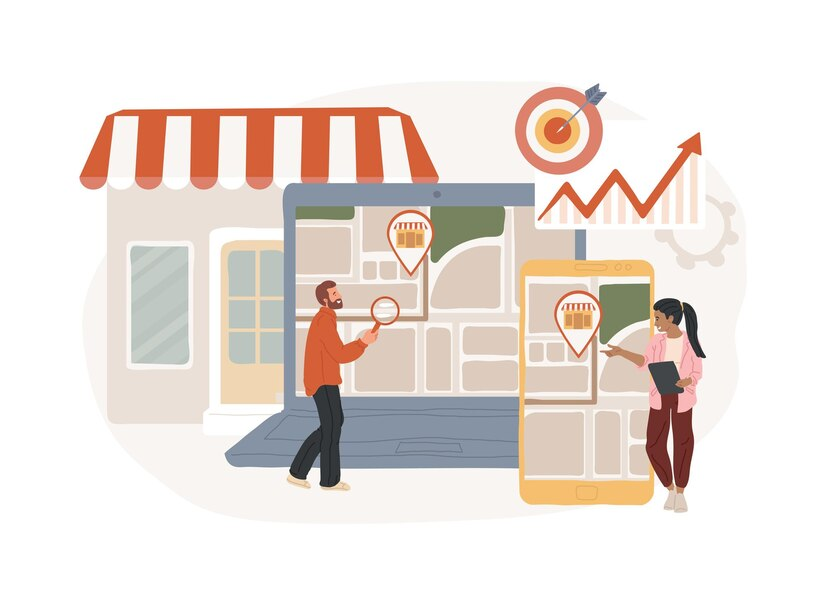
Future Trends of PPC that Are Beneficial for Your E-Commerce Business
Voice Search: The Future of Shopping
Did you know that 55% of households are expected to own a smart speaker by 2025? This shift in how consumers search means that optimizing your PPC for e-commerce needs to account for voice queries. Adopting long-tail keywords and natural language phrases can help your ads resonate with voice searches, putting your products front and centre when shoppers ask their devices for recommendations. As part of your e-commerce PPC management, focusing on voice search optimization can significantly enhance visibility.
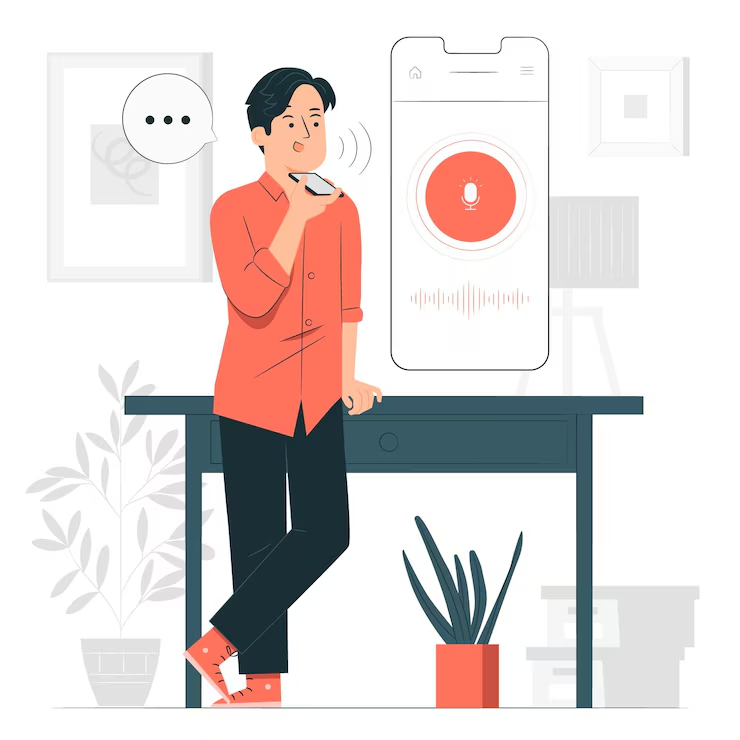
Augmented Reality (AR): Try Before You Buy
Imagine allowing your customers to visualize how a piece of furniture looks in their living room before they make a purchase. Augmented reality (AR) is set to change the game for e-commerce. Integrating AR features into your ads can provide customers with interactive experiences, making shopping more engaging and reducing return rates. As AR technology becomes more accessible, e-commerce businesses should explore how it can be integrated into their PPC campaigns. This innovative approach will be essential for effective PPC management for eCommerce businesses looking to stand out.
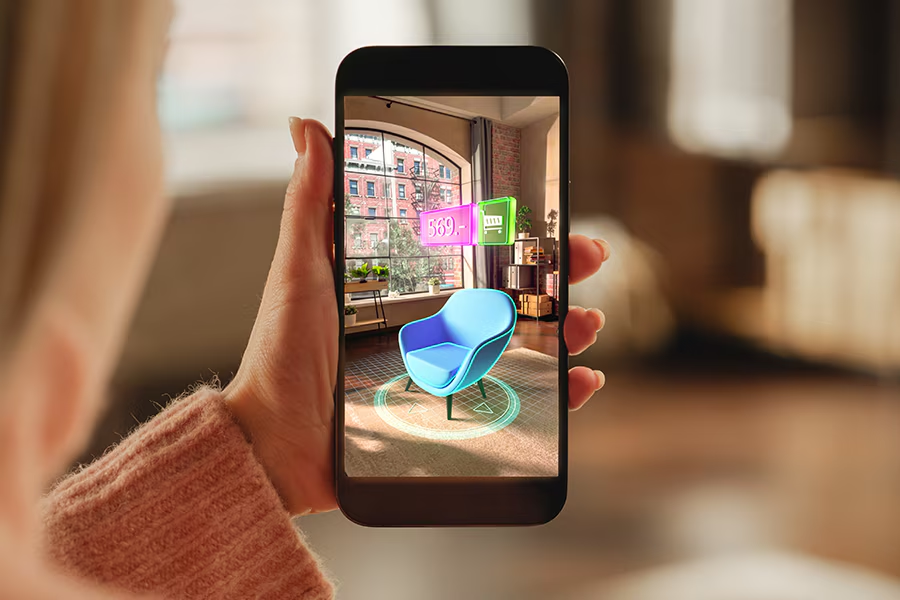
Local Search Ads: Capture the Nearby Market
As more consumers search for products in their vicinity, local inventory ads are becoming increasingly valuable. These ads allow e-commerce businesses with physical locations to display products available nearby, driving foot traffic and increasing online sales. For businesses looking to tap into their local markets, incorporating local ranking and local PPC strategies is a must. Leveraging local search ads will enhance your overall e-commerce PPC management, making your advertising efforts more relevant to nearby shoppers.
Social Commerce: The New Frontier
Platforms like Instagram and Facebook are not just for social interaction they’re becoming bustling marketplaces. With the rise of social commerce, e-commerce businesses should look to integrate shopping features directly into their social media ads. This seamless shopping experience encourages impulse purchases and can lead to significant boosts in sales. Incorporating social commerce into your PPC management for eCommerce businesses is crucial for maximising reach and engagement.
Video Ads: Engage and Convert
Video is the king of content! With consumers retaining 95% of a message when they watch it in a video versus just 10% when reading it in text, incorporating video ads into your PPC strategy can drastically improve engagement rates. Platforms like YouTube and Instagram allow you to showcase your products in action, offering potential customers a more immersive experience that drives conversions. As e-commerce continues to grow, expect video content to become an essential component of any successful advertising strategy. Effective Google PPC management services can help you create and optimize these compelling video ads for better results.
Types of E-Commerce Digital Ads
Search Ads
- Description: Search ads are text-based advertisements that appear at the top of search engine results pages (SERPs) when users search for specific keywords related to products or services. These ads are usually marked as “sponsored” or “ad.”
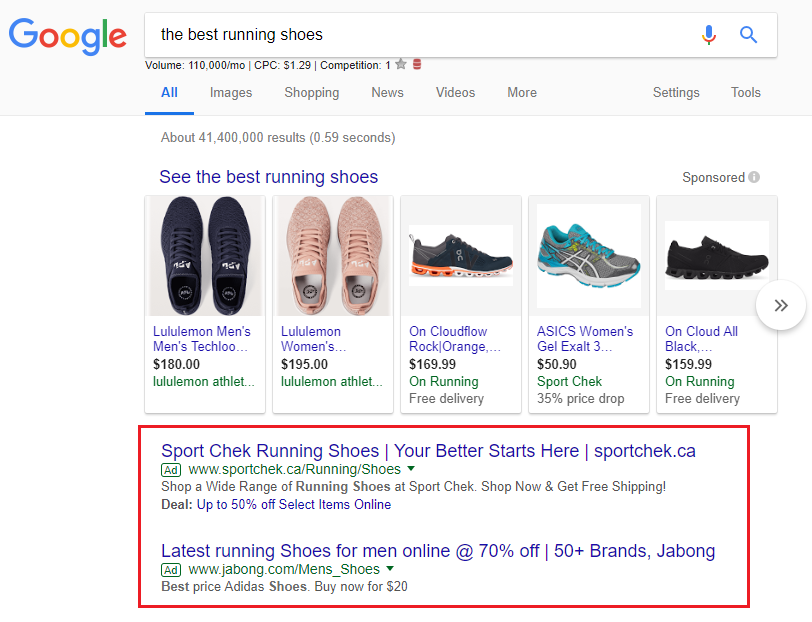
- Benefits:
- High Intent: Users who see these ads are often actively looking to purchase, making them more likely to convert.
- Cost-Effective: E-commerce businesses only pay when someone clicks on their ad (cost-per-click), ensuring they only spend money when there’s interest.
- Targeting: Advertisers can target specific keywords, locations, and demographics, allowing for precise audience targeting.
Display Ads
- Description: Display ads consist of visual content (banners, images, or videos) that appear on websites within the Google Display Network or on other publisher sites. These ads can be static or dynamic and can include call-to-action buttons.
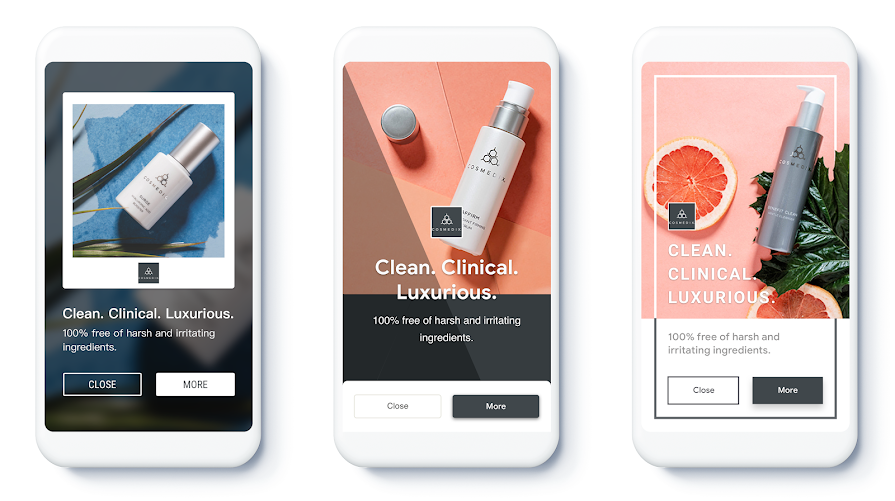
- Benefits:
- Brand Awareness: Display ads help build brand recognition by keeping your brand visible across various sites.
- Retargeting Opportunities: Display ads can be used for retargeting, reminding users of products they viewed on your site, thus encouraging them to return.
- Visual Appeal: The ability to use images and animations makes display ads engaging and can lead to higher click-through rates (CTR).
There are various types of display ads that can effectively capture your audience’s attention. Check out this blog to explore the different types and formats of display ads, and discover which ones can best enhance your e-commerce advertising strategy.
Social Media Ads
- Description: These ads are designed for social media platforms like Facebook, Instagram, Twitter, LinkedIn, and Pinterest. They can appear as sponsored posts, stories, or in-feed ads and can be targeted based on user demographics, interests, and behaviours.

- Benefits:
- Engagement: Social media ads encourage interaction through likes, shares, and comments, fostering community engagement.
- Diverse Formats: Advertisers can utilize various formats, including carousel ads (multiple images), video ads, and collection ads, to showcase products creatively.
- Targeted Reach: The ability to target specific audiences based on detailed user data ensures that ads reach the most relevant users.
Video Ads
- Description: Video ads can be placed on platforms like YouTube, Facebook, and Instagram. They can range from short promotional clips to longer storytelling videos that highlight products or services.
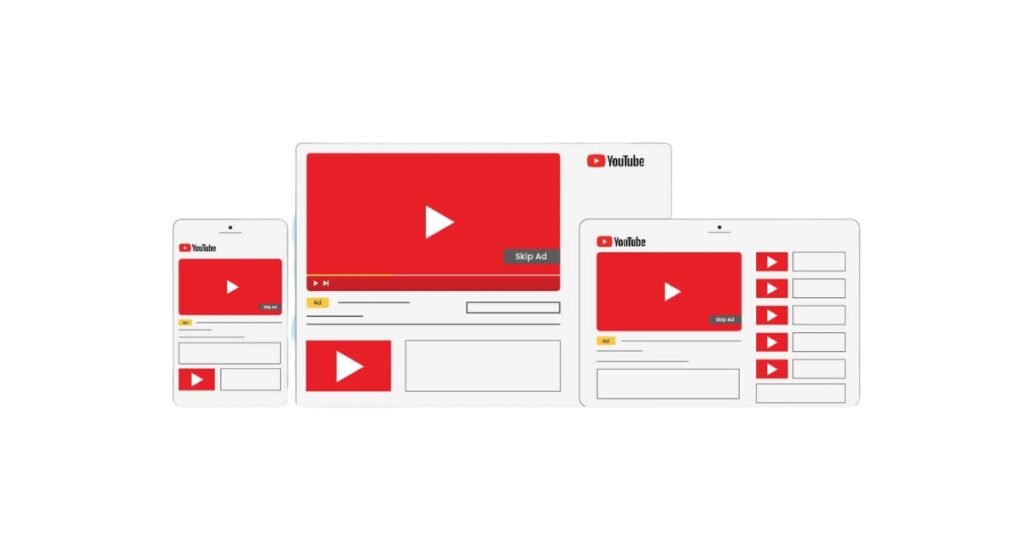
- Benefits:
- Higher Retention: Video content is known for its ability to engage users, with studies showing that consumers retain 95% of a message when they watch it in a video compared to just 10% when reading.
- Demonstration: Video ads allow businesses to demonstrate how a product works, which can help answer customer questions and overcome objections.
- Shareability: Engaging video ads are more likely to be shared, expanding organic reach and enhancing brand visibility.
Shopping Ads
- Description: Shopping ads (or product listing ads) appear in search results, featuring product images, titles, prices, and the store name. They typically show up when users search for specific products.

Benefits:
- Visual Appeal: By showcasing products with eye-catching images and pricing, shopping ads attract users’ attention and encourage clicks.
- Informative: These ads provide essential information upfront, allowing customers to compare products before clicking through.
- Higher Conversion Rates: Shopping ads tend to have higher conversion rates as they reach users who are ready to buy.
Strategies for Google Shopping Campaigns can further enhance these benefits, ensuring that your ads are optimized for maximum impact.
Affiliate Marketing Ads
- Description: In affiliate marketing, e-commerce businesses partner with affiliates (bloggers, influencers, etc.) who promote products and earn a commission on sales generated through their referral links.
- Benefits:
- Cost-Effective: Businesses only pay when a sale is made, making this a performance-based advertising strategy.
- Extended Reach: Affiliates can reach new audiences, tapping into their followers and expanding brand awareness.
- Diverse Marketing: Affiliates often create unique content to promote products, providing fresh marketing perspectives.
Email Ads
- Description: Email advertising involves sending promotional content directly to potential or existing customers’ email addresses. This can include newsletters, product announcements, or special offers.
- Benefits:
- Personalization: Email ads can be tailored to individual preferences, enhancing the likelihood of engagement and conversion.
- Nurturing Leads: Email marketing helps build relationships with customers by providing valuable content and keeping them informed about promotions.
- High ROI: When done effectively, email marketing can deliver significant returns on investment due to its direct nature and lower costs.
Retargeting Ads
- Description: Retargeting ads focus on users who have previously visited an e-commerce site but did not make a purchase. These ads remind them of products they viewed, encouraging them to return to the site.

- Benefits:
- Higher Conversion Rates: Retargeted ads can lead to significantly higher conversion rates, as they target users already familiar with the brand.
- Increased Brand Recall: Retargeting keeps the brand top-of-mind, encouraging users to return and complete their purchase.
- Custom Messaging: Advertisers can customize messaging based on users’ previous interactions, increasing the relevancy of the ads.
Implementing effective retargeting strategies can enhance the success of your campaigns and maximize your return on investment.
Influencer Marketing Ads
- Description: Influencer marketing involves collaborating with individuals who have a large and engaged following on social media platforms. They create content to promote products in a natural and authentic way.
- Benefits:
- Trust and Credibility: Influencers can enhance brand credibility, as their followers often trust their recommendations.
- Targeted Audiences: Partnering with niche influencers allows brands to reach specific demographics that align with their target market.
- Creative Content: Influencers often produce high-quality, engaging content that can resonate with audiences and drive conversions.
By understanding the various types of e-commerce digital ads, businesses can create a diverse advertising strategy that leverages each format’s unique strengths. A well-rounded approach that incorporates search ads, display ads, social media ads, and more can enhance brand visibility, drive traffic, and ultimately increase sales in the competitive e-commerce landscape.
How Does PPC for E-commerce Work?
PPC for e-commerce is a straightforward yet powerful way to drive targeted traffic to your online store. To successfully launch a campaign, follow these essential steps:
1. Ad Creation
Creating ads for e-commerce PPC campaigns is simple and intuitive. These ads are typically compact and can vary in size, depending on the platform you choose. Generally, they consist of a catchy headline, a couple of lines of compelling ad copy, and, in some cases, an engaging image to attract attention.
For instance, if you’re utilizing Google Ads, you might not even need images; all you need is a direct link to your landing page, an enticing headline, and two lines of text that communicate your value proposition effectively. This makes it easier for businesses to start with affordable PPC management solutions that suit their needs.

2. Keyword Selection
In the Google Ads PPC model, selecting the right keywords is crucial for the success of your campaign. You’ll want to choose keywords that are relevant to your products and likely to be searched by your target audience.
For example, if you run an e-commerce store that specializes in skincare products, you might opt for long-tail keywords like “best organic moisturizer for dry skin” or “top-rated anti-ageing serum for sensitive skin.” Your ads will appear when users search for those specific phrases or close variations, increasing the likelihood of attracting interested shoppers. This strategic approach can significantly enhance your PPC marketing strategy.

3. Bidding
Once your ads are created and your keywords are selected, it’s time to set your bids. The bidding process allows you to decide how much you’re willing to pay each time someone clicks on your ad.
The bid amount can vary greatly depending on the competitiveness of your chosen keywords. For example, if you target high-volume keywords such as “best running shoes for women,” you might find yourself paying more per click than for niche keywords like “affordable lightweight trail running shoes.” This is why thorough keyword research is vital for optimizing your PPC for e-commerce businesses.
Boost Your Sales with Magic Clickz: Your E-Commerce Growth Partner!
Are you struggling to stand out in the crowded e-commerce landscape? Magic Clickz is here to help! As the leading e-commerce PPC agency, we specialize in turning your challenges into opportunities.
Our expert Google PPC management services are designed to boost your visibility and drive sales. We’ve helped numerous businesses like yours achieve their goals through tailored e-commerce PPC management strategies and pay-per-click services for e-commerce businesses.

Ready to elevate your online presence? Partner with Magic Clickz, your go-to digital marketing agency in Indore. Let’s create a powerful digital marketing strategy together that gets results!
Check out More Blogs From Magic Cickz – ROI Driven Digital Marketing Agency
Struggling with Low E-commerce ROI? Discover How the Best PPC Agency Can Help
Best Strategies for Google Shopping Campaigns 2024
How Much Does It Cost to Build a Website for a Small Business in 2024?


